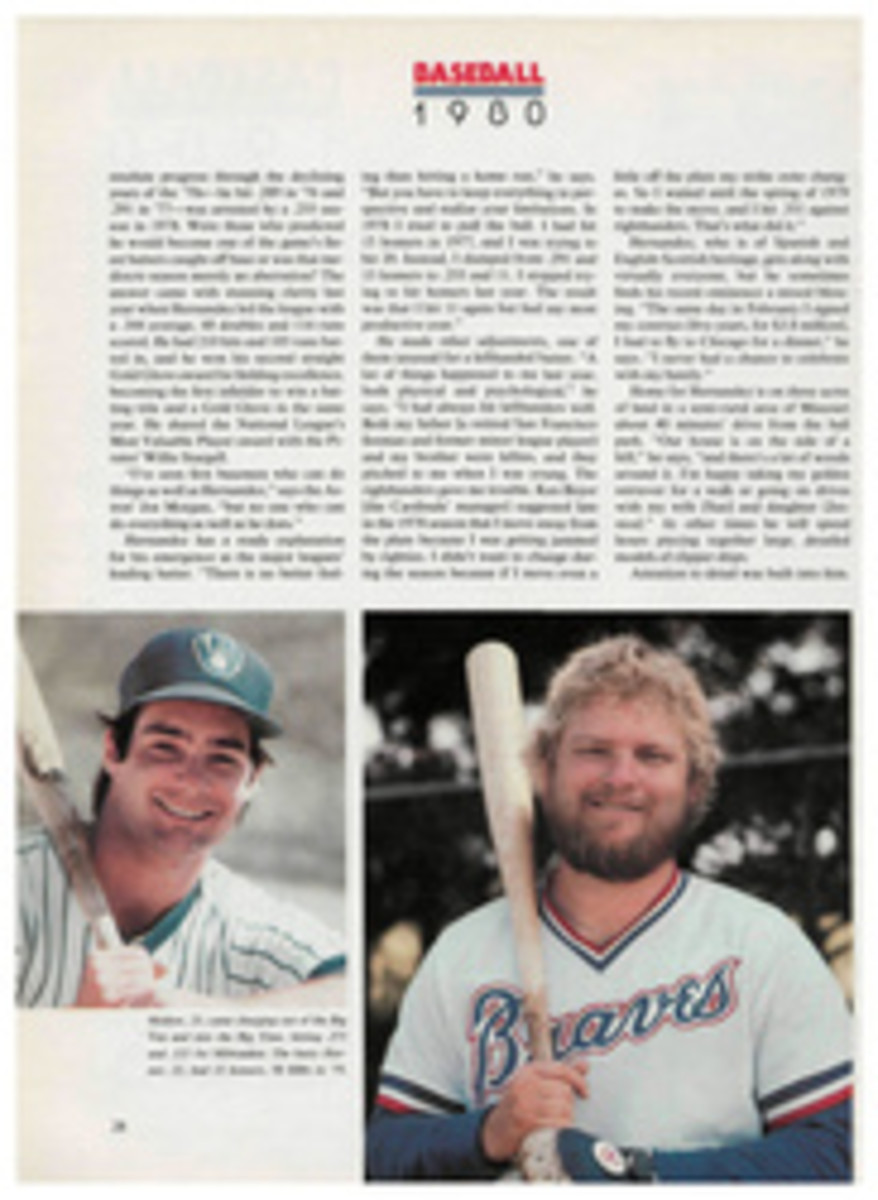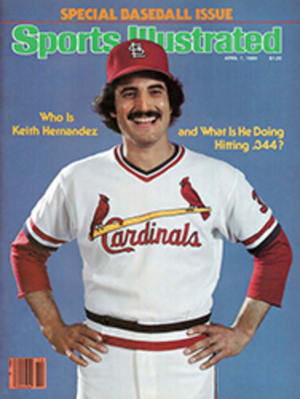
SCORECARD
BOYCOTT UPDATE
There are indications of a growing movement against President Carter's proposed boycott of the Olympics and for the sending of a U.S. team to the Moscow Games. Although Carter is pressing for support from Western-bloc countries, the Olympic committees of Britain, France, Norway, Canada and Australia have voted for or are leaning toward sending teams to Moscow, despite pleas from their governments that they not go.
Robert Helmick, a USOC member, president of the AAU and secretary of FINA, the world swimming federation, who last week returned from FINA meetings in Europe including the Soviet Union, says, "I am convinced that very few, if any, Western-bloc countries will be boycotting."
For their part, the Soviets are buoyantly confident that the Games will succeed. "Their attitude is: 'Gee, it's a shame you won't be here, because everyone else is coming,' " Helmick says. "At a time when they seem contemptuous of world opinion about Afghanistan, they see the Olympic entries as symbols of approval from the Western countries.
"Foreign policy is set by our administration, and to back off now might hurt. But if the public and the members of the USOC feel the best interests of the country would be served by sending a team, then I think the committee would go against the President's wishes. It would be unfortunate if it came down to that, but that right does exist here."
The possibility of the USOC voting to accept the Moscow invitation and the refusal of some athletes to heed the President's policy may have prompted Carter last week to address an issue on which he would only equivocate at the recent White House briefing for past and prospective Olympians (SI, March 31). To the question of whether he'll try to bar U.S. individuals from traveling to Moscow, Carter stated, "I think I have the authority, but I will not use it. The athletes ought to make that decision themselves."
Perhaps he was taking his cue from Robert Ellicott, the Australian Home Affairs Minister, who was asked the same question about the possibility of the Australian Olympic Federation's sending a team to Moscow. With obvious pride, he said, "We are not going to use the same tactics as those we so strongly oppose."
THE BIG ROUNDUP
One of the problems bedeviling the PGA tour is that the better golfers tend to be choosy about where they play, leaving some events deficient in big-name attractions. In hopes of corralling the best possible fields, promoters of Dallas' Byron Nelson Classic and Fort Worth's Colonial National Invitation, held on successive weekends in mid-May, are joining forces to offer a bonus of $200,000 to anybody who wins both events this year. That's in addition to the first prize of $54,000 at each tournament.
The rub is that winning the $200,000 will be a tough proposition no matter who participates. Ben Crenshaw in 1977 and Lee Trevino in 1978 came close to pulling off the double, each winning the Colonial after placing second in the Nelson. But nobody has won both events in the same year since Ben Hogan did it in 1946. And if the $200,000 bait has its desired effect, the fields will be so strong that winning both tournaments will become even more difficult this year. One thing you can be sure of, though. Whoever wins the Byron Nelson now will stick around for the Colonial.
STRANGE BEDFELLOWS
In an unusual alliance of corporate and conservation interests, the National Audubon Society has announced that Celanese Corporation, a giant of the chemical industry, would donate $400,000 to the Audubon endangered-species project. It is the largest donation the Society has ever received. Noting that the environmental movement and the chemical business often have been in conflict, John Macomber, president and chief executive officer of Celanese, said, "We're perceived as being uncaring. We wanted to show there's one who cares."
The Celanese gift will be applied to existing programs aimed at saving the California condor, of which there are now believed to be fewer than 30, with only one known breeding pair; aiding the bald eagle; continuing the effort to restore a self-sustaining breeding population among whooping cranes; and reintroducing the Atlantic puffin to areas it has abandoned.
It is well established, of course, that many bird species have suffered severely from chemical pollution of their habitats; according to Audubon ornithologist Dick Plunkett, the California condor carcasses being found as that bird nears extinction contain toxic levels of DDT, DDE and PCB. While it may be tempting to suggest that Celanese is purchasing an image-cleansing endorsement, it does not manufacture any of these chemicals. Yet, as Plunkett observes, "Next to mother and God, there are endangered species. The condor and bald eagle, they're right up there next to mother."
Still, Audubon was pleased to have the money, although much more is needed if the Society's endangered-species project is to be successful. And some of the cynicism about Celanese's gift was offset by Macomber's modest birding expertise, borne out by his apt description of the quizzical Atlantic puffin: "It looks like a very proper, old-fashioned banker."
ONE MOUNT TO ANOTHER
The sudden volcanic activity of Mount St. Helens, a 9,677-foot peak in Washington's Cascade Range, marks the first such eruption in the contiguous U.S. since that of northern California's Mount Lassen in 1915. Last Thursday, after a week of tremors and minor earthquakes that were felt as far as 50 miles away, Mount St. Helens began spewing steam, ash and small boulders some 10,000 feet into the air. Though dormant for many years, Mount St. Helens was described by the U.S. Geological Survey in 1979 as "the most active and explosive volcano in the coterminous 48 states during the past 4,500 years."
Though residents in the immediate vicinty of Mount St. Helens were evacuated, excited volcanologists from the University of Washington and the Geological Survey were maintaining a scientific vigil at the mountain. But even they weren't sure quite what to expect next. The Portland Oregonian, in an editorial cheering the venting, hoped for a modest, good show that the world might admire.
Meanwhile, on Friday night, bettors on the sixth race at Portland Meadows, 40 miles south of Mount St. Helens, had the opportunity to put their money on a 4-year-old long shot named Dominant Volcano. Looking to the events of the day rather than the horse's past performances, wagerers drove the odds on the colt down to as low as 6-1 before the price returned to a more reasonable 17-1. Midway through the six-furlong race, Dominant Volcano was well placed in fourth, poised to match Mount St. Helens' earlier display with a sudden burst of his own. But at the wire it was...Steeltoo, with Dominant Volcano finishing a dormant fifth.
BABY REGGIE
Reggie Jackson studied biology at Arizona State, so he took a particular interest in the recent revelation that Nobel Prize winners were being asked to contribute to a sperm bank. The Yankees' rightfielder told Bill Brubaker of The Miami News, "As soon as I started hearing about sperm banks, I thought of how they might relate to athletics. I think the physical traits of athletes could be passed on easily that way. It's a hell of an idea." Jackson, who already has a candy bar named after him, said he might be receptive to having such issue. "If I was to get involved in this, I would just have to listen to the woman's philosophy and try to figure whether we could have a good amicable relationship, because, even though I would probably consent to the sperm-bank arrangement, I would want to know them [mother and child] and maintain a fatherly relationship with the child."
Questions of morality aside, Reggie may be on to something as far as baseball genes are concerned. Eighteen players who have been on major league rosters during the last two seasons have fathers who also played in the majors, and a pretty fair team could be fashioned out of the sons. The catching would be very strong with Bob Boone (son of Ray), Milt May (Pinky), Terry Kennedy (Bob), and Ozzie Virgil Jr. At third base would be Buddy Bell (Gus), at shortstop Roy Smalley III, at second base Bump Wills (Maury), and if Boone didn't mind, he could play first. The father-son team is a little weak in the outfield, with Del Un-ser (Al) the only son who plays there regularly, but Dale Berra (Yogi) and Kennedy could fill in nicely. There are even utility infielders Tom Heintzelman (Ken) and Mike Adams (Bobby). The pitchers would be lefthanders Steve Trout (Dizzy), Ross Grimsley II, Harry Chiti Jr. and Paul Siebert (Dick) and righthanders Matt Keough (Marty), Joe Coleman (Joseph Patrick) and Steve Narleski (Ray). Qualifications might well be liberalized to include First Baseman Jim Spencer, whose grandfather, L. Benjamin Spencer, played the outfield for Washington in 1913, and Garry Templeton, whose father, Spiavia, was in the Negro Leagues. Or actor Michael Moriarty, who played the fictional pitcher, Henry Wiggen, in the movie Bang the Drum Slowly and is the grandson of Third Baseman George Moriarty, Ty Cobb's teammate in Detroit for seven years.
There are also nine brother combinations currently active, and nine players whose brothers were once in the majors. DNA must have something to do with RBIs and ERAs.
DNAsty
DNA may also have played a big part in UCLA making it into the NCAA basketball finals. Kiki Vandeweghe, the best-shooting Bruin forward ever and captain of the UCLA team that lost to Louisville in the championship game two weeks ago, has an impressive array of genes. Dad is Ernie Vandeweghe, a noted physician who starred at Colgate in 1945-49 and played forward for the New York Knicks while interning at Bellevue. Mom is Colleen Hutchins, Miss America 1952, herself a star swimmer. Tauna, Kiki's younger sister, swam for the U.S. Olympic team in Montreal.
In fact, until he was 13, swimming was Kiki's main athletic interest, and at one time he was ranked No. 1 in his age group in 11 events. Admittedly, a lot can happen between age-group competition and an Olympic final, but consider this: there is only one age-group swimming record from the 1960s that stands in the 1980s, 31.7 seconds for boys' 10-and-under 50-meter butterfly, and it was set in June 1969 by 10-year-old Kiki Vandeweghe.
BILL FOSTER CALLING...AND CALLING
For five confusing years, Atlantic Coast Conference basketball suffered the inconvenience of having two Bill Fosters—one the coach at Duke, the other the coach at Clemson. Well, the ACC doesn't have two Bill Fosters anymore, but the state of South Carolina does. William E. Foster has left Duke to become the coach at South Carolina, which isn't in the ACC but is the chief intrastate rival of Clemson, whose team is coached, as before, by William C. Foster. South Carolina and Clemson traditionally wage torrid recruiting battles for the state's leading prep stars. When the phone rings nowadays, they'd better be sure which Bill Foster is on the line.
ILLUSTRATION
THEY SAID IT
•Bill Lee, Montreal Expo southpaw, expounding on the subject of the brain's hemispheres: "You have a left and a right. The left side controls the right half of your body, and the right side controls the left half. Therefore, lefthanders are the only people in their right mind."
•Lynn Dixon, reporter at Columbus radio station WBNS, on Cleveland as a possible site for the alternative Olympics: "They wouldn't need a torch. They could just light Lake Erie."
•Sue Stadler, wife of beefy golf pro Craig Stadler: "I think it's funny that almost all the sportswriters who are always asking why Craig doesn't lose weight are heavier than he is."

